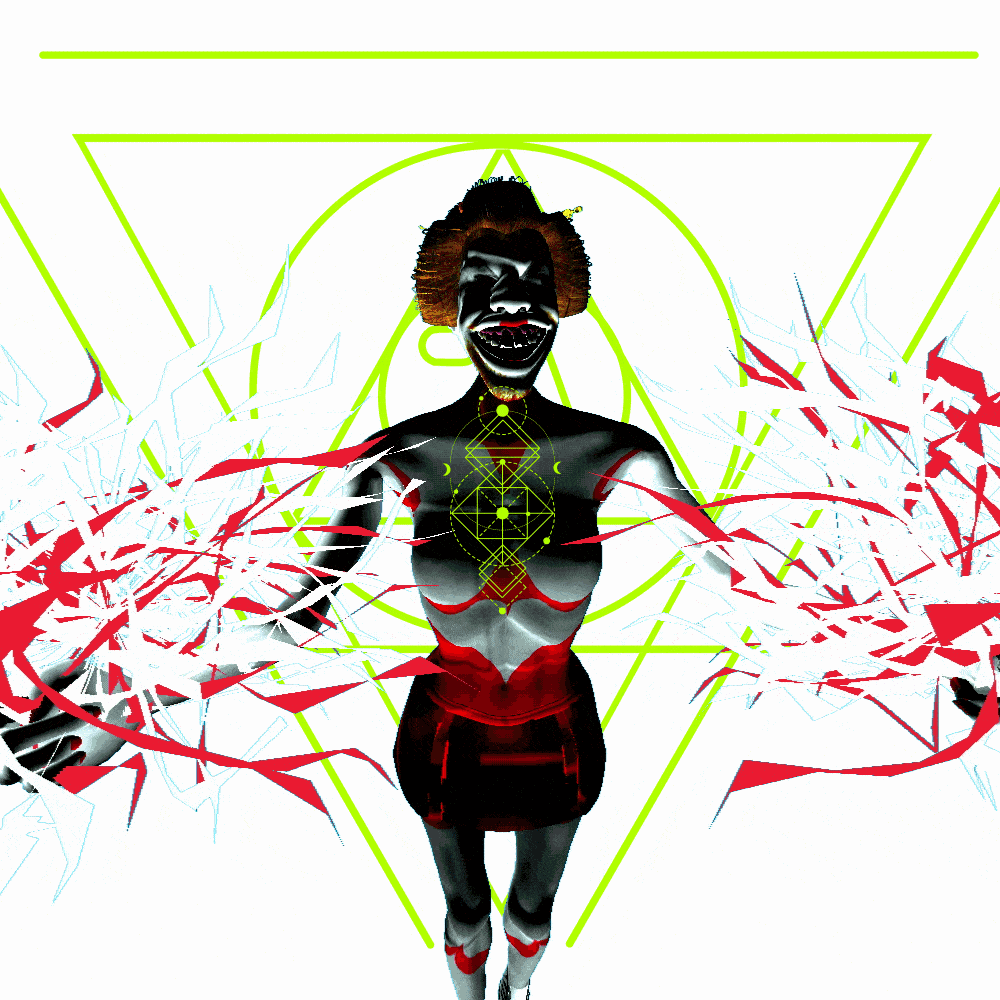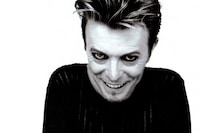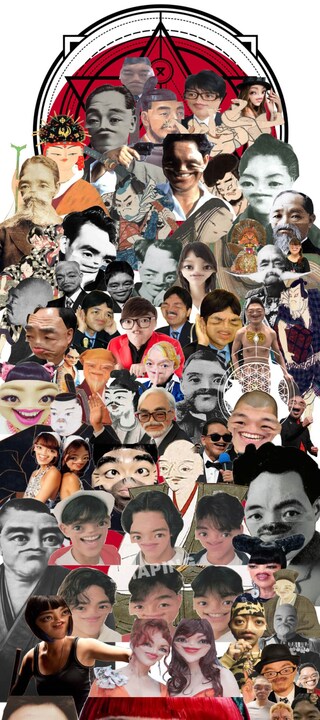We speak to Weirdcore, the elusive designer who creates visual worlds for artists such as AFX and M.I.A.
This was originally published on September 27, 2017
When Aphex Twin released “Windowlicker” in 1999, its Chris Cunningham-directed video – at least in its edited, pre-watershed guise – could share MTV airtime with Eiffel 65’s “Blue” and “Mambo No. 5”. As a nine-year old at the time, the video introduced me to a weirdness I’d never seen on primetime TV before; it’s probably the first music video I can remember my family despising.
Two decades later and Richard D. James is still as adept at finding artists whose visuals ideas are as madcap as his own musical vision. If you’ve caught any of his rare live performances, you’ll have seen the reclusive musician’s ideas transformed into big-screen spectacles, and it’s all thanks to his collaborator Weirdcore.
Having worked with the likes of M.I.A., Simian Mobile Disco, Mos Def, and Oneohtrix Point Never’s Ford & Lopatin project, Weirdcore's often absurdist visual aesthetic resonates across genres; whether it’s morphing a Miley Cyrus live show into a hyperactive sensory assault, or turning the inner-workings of DJ Scotch Egg's mind into a TV channel. He can tap into the weirdness that lies within an artist's imagination because, for Weirdcore, they lie in his too.
Behind the LED screens, Weirdcore keeps his identity hidden from the wider public. He pixelates his own keynote speeches, with his work only appearing through fan-filmed YouTube clips and a brief synopsis on his weirdcore.tv website. Saying that, he waives his right to go incognito to speak over a glitching Skype connection from his London home. “I wonder what kids think about Aphex Twin now,” Weirdcore asks. “Is he big with the kids? At festivals, all the kids who came to his shows were all probably born around the time ‘Windowlicker’ was released – what do they make of it? I can’t quite figure it out, but for me it’s interesting to see how the audience changes, because the show evolves around the crowd and individuals.”


Throughout the 90s and mid-2000s, Weirdcore made the rounds across London’s venues and squat parties, juggling gigs at the ICA and Heaven with “dirty stuff in dark basements” that blurred the lines of legality. “If I could manage to do a live show in a squat party, then I can manage to do a live show anywhere really,” he says, almost too casually. As he studied media communications at Leeds University and dwelled in the city’s Orbit institution throughout the 90s, Weirdcore formed a belief that continues to inspire his work.
“Around that time I realised how things on TV are created to make you think in a certain way,” he says. “Me and Richard are quite into… I wouldn’t say conspiracy theories, but the fact that we’re all being surveyed by the powers that be. That’s why the show, with all the different screens on the stage, looks like a control room. It’s based on the war room in WarGames when that kid hacks into the Pentagon, or Dr. Strangelove. The reason we did that is a) I wanted to make it less like a big cinema screen, but also that b) it reflects on how we’re basically all constantly being surveyed. I’ve always been interested in that stuff, but Richard has always been way more into it. I think he has a lot more time on his hands to look into these sorts of things.”
Weirdcore and Aphex’s inaugural show together came in March 2009 at Bloc festival in Minehead, just one month after James first made contact with Weirdcore. “I had very little time to put it all together, especially as we had a screaming seven-month-old to look after at the time,” he says. “That was pretty hard.” Over time, the Aphex Twin live show has grown. In 2017, Fuji Rock, Barcelona, Porto, Finland, Ireland and London’s Field Day festival were co-ordinates for the first Aphex Twin shows since the release of 2014’s Syro. Has Weirdcore’s work had to evolve as alongside Aphex’s? “Erm, kind of,” he replies. “But Richard likes doing his own thing, which always leaves me trying to find out what he’s going to play to save a certain type of visual for a certain track. He just never tells us, though. Well, sometimes he does, but then doesn’t play it anyway.”
Certain elements of the show see Weirdcore’s visuals manipulated by the track’s waveform being played at the time; a logistical minefield when reacting to James’s often manic, ever-evolving chaotic flutters of electronic frequency and tempo. “With the sound-reactive visuals, some react to the bass, some the mids, others the highs, and so on,” he explains. “But Richard plays such a varied mix of stuff that you have to keep adjusting the settings for the sound-reactive stuff constantly, because one track will be like this, and the next completely different, so it’s hard.”
At points throughout the two-hour show, Weirdcore uses facial mapping to turn his crowds into local celebrities, pasting their faces over stock images and placing them onto the big screens that surround James’s desk, projecting their least flattering moments to a crowd of thousands. Think of it like one of those cutout photo boards you find in British seaside towns, where the wide-eyed grins are chemically manufactured. José Mourinho, the cast of TOWIE, Japanese Instagram stars, and Ireland’s local hero Dustin the Turkey have all been given the Weirdcore treatment.
“We used Katie Hopkins once,” he laughs. “I didn’t do the facial mapping to her though – she’s already quite bad as it is. But I’ve started to include celebrities throughout time, too. I pick the type of pictures that people remember from school textbooks. They might not recognise them or put a name to it, but it’s going back into their subconscious, almost. It taps into the parts of your brain that you don’t use anymore, a trip down memory lane for Aphex fans.”

While Weirdcore’s work is not overtly political, it’s perhaps telling that his long-running collaborators are those whose music aims to disrupt. There’s Aphex, the Cornish producer whose music and mannerisms have held a mirror up to the music industry to reveal all its absurdities for years, and there’s M.I.A., whose live shows Weirdcore has visualised for the past decade and who is still being asked to defend swearing at the Superbowl several years later. “I think they both have that punk vibe to them, that mentality of just not caring,” says Weirdcore. “Well, they do care about certain things, of course – especially M.I.A. – but in many other ways, she does her own thing a lot of the time. Richard, there’s not that many things he cares about apart from being fairly secretive and elusive.”
Are their processes of creating any different? “With Richard, I’ve been able to make something that has evolved over the years, something we can refine, add bits to or take away from. With M.I.A., we make everything from scratch for every tour – but with Richard, if he likes something you’ll know he’ll like that forever… unless something goes really out of date.”
Weirdcore has forthcoming shows with drone industrialist The Caretaker at London’s Barbican Centre, while future directorial undertakings includes a project he describes as “experimental J-Pop”. “I find that pop stuff in the west – in Europe and America – it’s become so polished,” he says. “It almost looks like an advert. In Japan, they’re still into things being quite crazy and experimental, even within a pop world, so I’m really excited about that.” And what can we expect from the Aphex camp? “You never know with him, really,” he says. To be expected, really.















